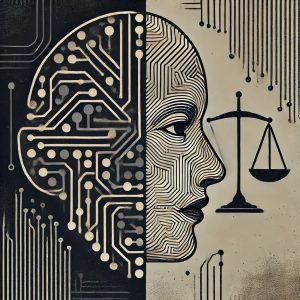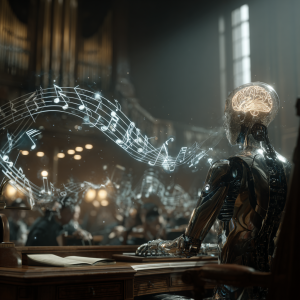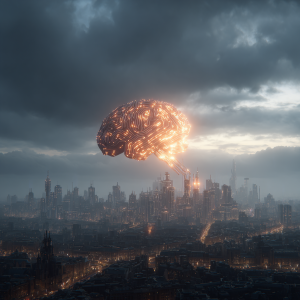Artificial intelligence is often depicted as an all-knowing, self-thinking entity – some futuristic mastermind plotting world domination. But in reality, AI isn´t magic. It doesn´t wake up one day an decide to learn calculus. Instead, at the core of AI lies a fascinating mechanism: neural networks.
These networks are the brains behind the bots, the digital neurons firing away to make AI work. Whether it´s ChatGPT crafting a legal argument, an image recognition system identifying a cat, or your spam filter keeping unwanted Emails at bay, neural networks are everywhere.
But what exactly are neural networks, how do the function and why should lawyers, policymakers and tech enthusiasts care? Let´s break it down.
1. What Are Neural Networks?
Neural networks are a subset of machine learning, which is itself a subset of artificial intelligence. They are designed to mimic the structure and function of the human brain (but without the existential crises 😊).
At their core, neural networks consist of layers of artificial neurons, also called nodes. These neurons process information, learn patterns and make predictions – just like their biological counterparts but without the coffee addiction.
A typical neural network has three main layers:
- Input Layer: This is where the data enters the network. Think of it as the eyes and ears of the system.
- Hidden Layers: These layers do the heavy lifting. Each neuron takes in inputs, applies mathematical transformations and passes information forward. This is where the magic (a.k.a. linear algebra) happens.
- Output Layer: This is where the final decision is made, whether it´s classifying an email as spam or generating a witty AI response.
Neurons in a network are connected by weights, which determine the strength of a connection and biases, which finetune decisions. Through training, these weights and biases are adjusted, allowing the network to improve its predictions over time.
In essence, a neural network is like a law student: it absorbs data, makes mistakes, learns from feedback, and hopefully gets better (after enough late nights).
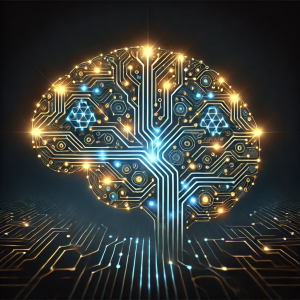
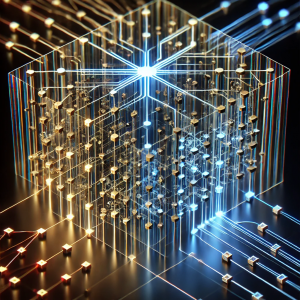
2. How Do Neural Networks Learn?
Neural networks learn through a process called training, which involves feeding the model large amounts of data and adjusting weights based on performance. The goal? To minimize errors and make the network as accurate as possible.
The most common method for training is supervised learning, where the network is given labeled data. For example, if you want an AI to recognize fraudulent financial transactions, you´d train it with examples of fraud (and non-fraud) until it spots the patterns.
The learning process relies on three key concepts:
a) Forward Propagation
> Data flows from input to output, and the network makes a prediction.
b) Loss Function
>The network checks how far off its prediction was. If it´s wildly incorrect, it´s like getting a bad grade on a test – time to study harder.
c) Backpropagation & Gradient Descent
> The network adjusts its weights by working backwards, fine-tuning itself to improve future predictions. This is the digital equivalent of learning from mistakes (though AI doesn´t have to suffer through disappointed professors). With enough training, a neural network becomes increasingly precise, allowing it to handle complex tasks – whether it´s detecting tumors in medical scans or generating deepfake videos that make politicians say bizarre things (for educational purposes, of course).
3. Types of Neural Networks (Because One Size Doesn´t Fit All)
Not all neural networks are created equal. Depending on the task, different architectures are used. Here are some of the key players:
a) Feedforward Neural Networks (FNN)
> The simplest type – data flows in one direction, no loops, no funny business. Great for straightforward tasks like image classification.
b) Convolutional Neural Networks (CNNs)
> Designed for image and video processing. They use filters to detect patterns, making them perfect for facial recognition and self-driving cars.
c) Recurrent Neural Networks (RNNs)
> These networks remember past inputs, making them ideal for sequential data like speech and text. However, they sometimes suffer from short-term memory loss (not unlike overworked lawyers).
d) Transformer Networks
> The backbone of large language models (like ChatGPT). Transformers use self-attention mechanisms to process words in relation to each other, allowing AI to generate surprisingly coherent texts.
Each type of network has its strengths and weaknesses, and often, multiple architectures are combined for complex AI applications.
4. Why Do Neural Networks Matter for Legal Professionals?
Now, you might be wondering, why should I, a legal professional, care about neural networks? Good questions. Here´s why:
a) AI in Legal Research & Due Diligence
> Neural Networks power legal research tools that analyze thousands of cases in seconds, saving lawyers hours of soul-crushing document review.
b) Contract Review & Automation
> AI-driven systems can scan contracts, identify risks and flag problematic clauses. No more missing that one liability clause that comes back to haunt you.
c) Predictive Analytics in Litigation
> Neural Networks can analyze past case law to predict outcomes, helping lawyers craft stronger arguments (or know when to settle).
d) AI Ethics & Regulation
> As AI becomes more prevalent, lawyers play a critical role in ensuring fairness, transparency, and compliance with regulations lite the EU AI Act. Understanding how neural networks work is essential for drafting policies that balance innovation with legal safeguards.
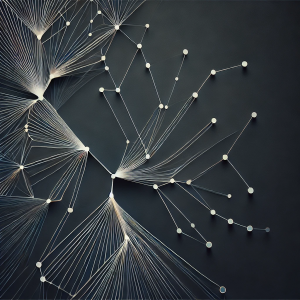
5. Limitations & Ethical Challenges
Before we crow neural networks as the future rulers of the legal profession, let´s acknowledge their flaws:
- Bias in AI: Neural networks can inherit and amplify biases present in training data. An AI judge? Not anytime soon.
- Opacity (The Black Box Problem): AI decisions aren´t always explainable, which is problematic for accountability. Imagine telling a court “The algorithm said so.” Not gonna fly.
- Computational Costs: Training large models requires immense resources, raising environmental and economic concerns.
Addressing these challenges is a key task for AI regulation and legal oversight.

Final Thoughts
Neural networks are undeniably powerful. They enable groundbreaking applications, from AI-generated contracts to automated legal research, but they´re not without flaws. As AI continues to reshape industries, understanding its mechanics is crucial – not just for techies but for lawyers, regulators and policymakers alike. The key takeaway? AI isn´t here to replace legal professionals. Instead, it´s a tool – a very smart, sometimes unpredictable, often misunderstood tool – that can enhance legal work when used correctly.
So next time someone asks what neural networks are, you´ll know they´re the brain behind the bots – but still a few law degrees away from making partner.
Stay curious, stay informed, and let´s keep exploring the fascinating world of AI together.
This post was written with the help of different AI tools.
Recommended Read:
Disclaimer: The links provided on this blog lead to external websites that are not under my control. I do not guarantee the accuracy, or the content of those sites. Visiting these sites is at your own discretion and risk.

